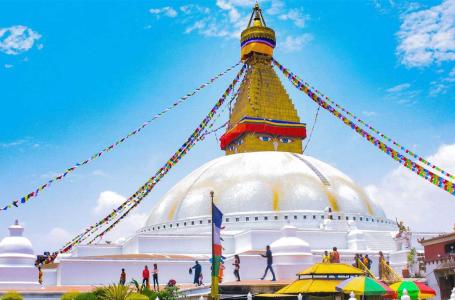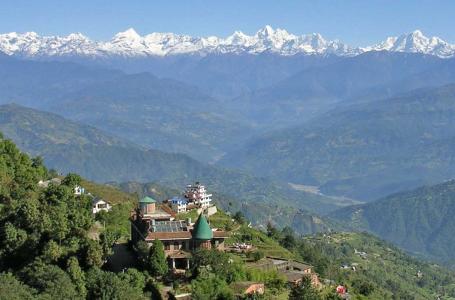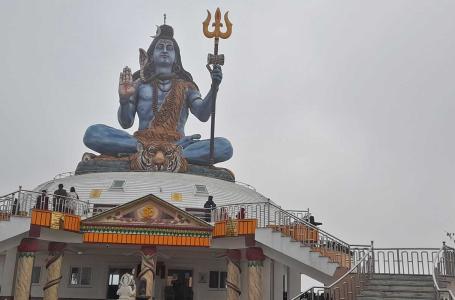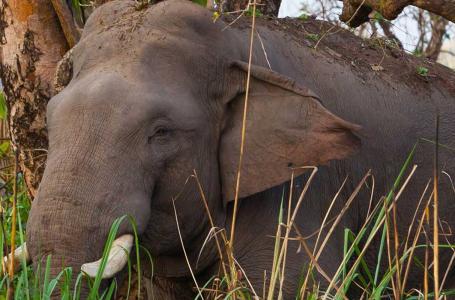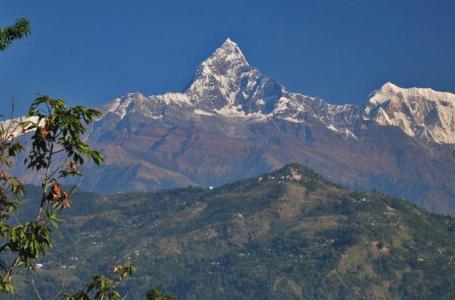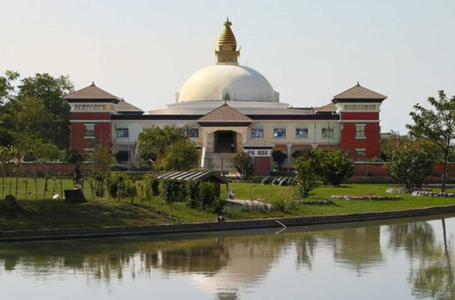Walking across the Sherpa-dominated hamlets of the Khumbu region is, indeed, the best possible way to touch the legends of Everest. The trails are off-the-beaten and crisscross several unexpected bluffs to take you to some of the exquisite viewpoints on earth, peering at the unreal panorama of mountains, lakes, and glaciers. Throughout the route, you will be gratified by the dramatic landscapes and animated valleys, defying the extremities of the mountains. To cut the matter, the EVEREST BASE CAMP SHORT TREK is the most affordable and inspiring for any mountain lover to dream of.
If you prefer a longer Trek then, check out our 12 Days Everest Base Camp Short Trek package.
Considering the challenges of the trek, there are mainly three elements that need to be focused on: altitude (or added height), unpredictable weather, and appropriate gear.
While all of the three passes are at an altitude of over 5,000 m, you must be properly acclimatized. Control your breathing speed and only proceed if you are feeling comfortable with the altitude. Otherwise, the only solution is to stop until fully acclimatized.
Like altitude, the weather status shouldn’t be ignored in any condition. The high passes have unpredictable weather and might turn worse in the blink of an eye. If bad weather conditions are observed, stop there and return to a safe place. Only if you have appropriate gear should you plan to move ahead. Work as per the suggestion of the guide. Otherwise, you never know how bad this weather can go up to.
Similarly, appropriate gear is a must for crossing the incredible high passes of Everest. A normal set of trekking gear is enough to cross these Passes, however, in bad weather conditions, you might require some more advanced equipment. A set of crampons may be required for safely crossing the Cho La Pass.
With this basic information, you can move ahead and plan an incredible trip to the Everest High Passes.
Autumn season (September, October, and November) is the perfect time to do this Express Everest Base Camp Trek. The weather is warm and the gripping of your boots could hold in the icy trails, making it easier for us to climb. Plus, in these months, you can search for a company (any trekker) to join you in the Everest Three Pass Trek.
Spring season (March, April, and May) is also good for trekking but there are chances of avalanches during this season.
Monsoon season and Summer Season (June, July, and August) are highly not recommended for the Everest Base Camp Trek(Express). Plus, the cold of the winter (December, January, and February) is unbearable for an ordinary trekker.
The lower section of Everest can accommodate various types of accommodations (teahouses, Budget Hotels, 3-star hotels, 4-star hotels, 5-star hotels). There are few possibilities in upper locations. Even the most basic teahouses will include a bed, a blanket (insufficient, so bring a sleeping bag), and a little table.
Food is a personal preference. You may sample various Nepali and Western cuisines. Dal Bhat is the finest carbohydrate choice, while veggies are the best protein option. Yak meat may be obtained even in the most remote areas.
It is also recommended that you chat with your guide about the cuisine for much better and more sanitary choices.
Because there is no direct connection from Kathmandu to Lukla, travellers have to travel for four hours (shared Hiace Van journey) from Kathmandu to Manthali Airport. This is due to heavy traffic at Kathmandu's international airport (Oct-Nov and March-Apr). We will then take a direct flight from Rameechap Manthali Airport to Lukla Airport). If you want to travel by private vehicle, an additional cost of USD 100 must be paid. In terms of flight time, Travellers should plan to check out at about 1 a.m. for the same-day flight. If you opt to remain one night in Rameechap for the same-day flight, you will be charged an additional amount for the hotel, which will be approximately USD 20 per person.
Note: If you are flying during the non-traffic season (January-February or May-September), a direct flight to Lukla is accessible from Kathmandu's Tribhuvan International Airport.
Our journey will come to an end in Lukla, where we will fly back to Rameechap Manthali Airport and board a shared Hiace van back to Kathmandu on the same day.
(Again, private vehicle costs an extra charge and are not included in this package)
Everest mostly requires 3 types of permits to enter the region. You will no longer require a Trekker’s Information Management System (TIMS) Card. These permits are only accessible through licensed agencies and no freelancer guide can provide these permits.
1. Khumbu Pasang Lhamu Rural Municipality Entrance Permit:
The purpose of this permission is to govern and manage tourism operations in the Khumbu area. It is required across the Khumbu area, including Namche Bazaar, Tengboche, Dingboche, Gorakshep, and others, and is valid till Jiri.
Cost: NPR 3000 Per Person for each foreigner.
2. Sagarmatha National Park Entry Permit:
This permit is designed to regulate and manage access to the Sagarmatha National Park, ensuring the preservation of its natural beauty and biodiversity. The revenue generated from these permits is used for the conservation and maintenance of the park.
Cost: NPR 3000 Per Person for each Foreigner
3. Additional Permit for Jiri to Everest Base Camp Short Trek:
An additional permit for the Gaurishankar Conservation Area is also necessary while entering Jiri till we reach the Everest Base Camp Trek.
Cost: NPR 3000 Per Person for each foreigner.
(All the permits required are included in this package).
You will only need your valid passport photocopy(validity of 6 months).
In the peak season, a flight is available from Ramechhap to Lukla. The journey from Kathmandu to Ramechhap takes approximately 5 hours by road, where you will need to catch a bus from Thamel around 1.30am. You will reach Ramechhap airport by 6.30am and then wait for your flight to Lukla. However, during off-peak times, you can fly directly from Kathmandu airport to Lukla.
On arriving at the airport at Lukla, with the shortest runway, we will start our trekking towards Phakding. We will walk along the silent trail, fenced by the farm fields on both sides and pass by several Mani walls.
There are suspension bridges, connecting the two isolated hills, which we will walk through in the hope of encountering a fabulous viewpoint. Consequently, the snowy peak of Kusum Kanguru could be witnessed at some point. Down the village of Ghat, we will finally make an appearance at the Phakding.
This day is one of the most challenging days of the whole Everest Base Camp Trek.
For the first few couple of hours, we will contour around the west side of the Dudhkoshi River and waver up and down along the frequent switchbacks on the trail. On the way, we will encounter a pleasant waterfall in the nice village of Toctoc. We will continue to walk, but just before arriving at the Bengkar, we will see another waterfall at Bengkar. You may as well try the apple pies of this region.
A brief ascent to Monjo will introduce us to the naturally exotic forest of Sagarmatha National Park. There are chances of witnessing the Blue Sheep, but only the luckiest few people have seen the red Panda here.
We will continue through the Jorsalle towards the Namche.
During the final ascent of the forest, there is a viewpoint overlooking the gorgeous views of Everest. It can only be witnessed on a clear day. A beautiful Kani Gate and a chorten welcome us to the village of Namche
From Namche, the trail leads off along the right-most trail through the memorial stupa of Tenzing Norgay Sherpa, the first person to summit the mountain of Everest with Sir Edmund Hillary. We will walk through the woods and extrude out into a viewpoint, offering sensational views of the Ama Dablam, Lhotse Shar, Taboche, Kangtega, and Thamserku.
We will continue our journey through the Phunke Tenga. Just before crossing a suspension bridge, there is a line of 7 water-driven prayer wheels, spinning with the pace of the river. One spin of the prayer wheel is similar to chanting the Buddhist Mantra of ‘Om Mane Padme Hum’. It is believed to be the good luck for the passerby.
Within a couple of minutes, we will introduce ourselves into the meadows of Saso Kharka and then, proceed to Tengboche. Don’t miss out on the visit to the Tengboche Monastery, the largest monastery in the Khumbu region.
Early in the morning, we will attend the prayer ceremonies at the Tengboche Monastery and then, explore the interiors and exteriors of the monastery. The fine paintings of the Buddha and Guru Rinpoche hung around the wall, are the masterpiece of traditional artistry of the Khumbu region.
We will proceed to the Deboche where the views of the Ama Dablam, and other peaks gradually rise to spark a moment of happiness in your soul. Soon, the trail meets a bridge, crossing which keeps us to the west of the Imja Khola. The large black overhanging rocks, on the way, used to provide shelter for the porters and ponies in the past when there was no facility for lodges to stay. The trail continues through the Somare, parallel to the Imja Khola until we arrive at the Dingboche, our next station.
Dingboche is a traditional village, typically with stone houses, where the farm fields and settlement area are surrounded by 4-foot (rough estimate) stone walls to protect them from the heavy winds. The people of this village greatly rely on yaks for living, and yak husbandry is their primary profession.
The walk to Lobuche is mostly along the moraine. This route from Dingboche to Lobuche can be divided into two parts, in terms of their distinct trails.
In the first part of the journey, we will ascend over the moraine and walk along the ridge, sometimes through the pastures, until we make up to the nice village of Dughla. While on the ridge, we may witness a few mountains in the north, but the haze will cover all the views, most of the time. When we arrive at the Dughla, our second part of the journey begins.
We will have already left the ridge, so we will proceed along the steep bluffs until making an appearance at the Lobuche. The second part is a bit of a tough climb. Once we are on the Lobuche, the reminiscing views of the Nuptse Peak cannot be overlooked. It can be seen from the window of the lodge as well on a clear day.
Certainly, this is the big day as we are about to enter into some of the exquisite viewpoints on earth. But, it is good to control your emotions and go slow on the trail. Otherwise, the altitude may ruin all the good aspects of coming so far to the base camp of Everest.
Before the darkness is swept by the sunlight, we will proceed to the Gorakshep from Lobuche. It is because, in the first few hours of the morning, the pacing of icy winds from the glaciers will resist our pace, making our trek more challenging to do.
Once we reach the Gorakshep, we will proceed to the awesome viewpoint of Kalapatthar. This place is so extraordinary that you will have to slap your cheek to become aware of the reality. The 3600 panorama of the mountains, particularly the Mount Everest, appears sensational. The glaciers and surrounding peaks of the Ama Dablam, Thamserku, and Kantega could be distinctly observed. But, the real animation is brought by the countless tiny anonymous buttresses, which have been guarding the soul of the mountains for ages.
Later, we will descend to the Gorakshep for an overnight stay.
[Note: The sunset view from the Kalapatthar is more exquisite than the sunrise view. Therefore, instead of going to the Everest Base Camp (EBC) (as in customary itinerary), we will go to Kalapatthar on this day.]
We will wake up early in the morning and leave for the Everest Base Camp (EBC) to experience the feeling of being on top of the world. The path is slippery, and sometimes, it goes through the narrow bluffs of snow making it difficult to proceed. But, once you are on the base camp of Everest, the joy is unparalleled.
It is an emotional moment, which many times becomes a teary moment. But, it is equally inspiring as well. There are camps, set in the base camp by the climbing team of the Everest. On a clear day, the views of the mountains can be fabulous, but nothing in comparison to being on top of the world.
After spending some quality moments on top of Everest, we will return to the Gorakshep for lunch. After lunch, we will retrace our steps back to Dughla via Lobuche. Instead of proceeding towards the Dingboche, we will head off towards the Pheriche, a quicker option to reach the Namche.
From Pheriche, we will go down the route of Tengboche to arrive at the Namche.
A trek to Lukla takes us along the same trail that we had been earlier.
Finally, we will leave Lukla, as early as possible, over the same intoxicating hills and mountains to finally arrive at Kathmandu. You may as well go shopping around the markets of Thamel
Trip Start and End Point
Kathmandu / Kathmandu
| DATES | STATUS | PRICE | SPACE LEFT | ||||
|---|---|---|---|---|---|---|---|
|
Start date: 03-May, 2025
End date: 13-May, 2025 |
Guaranteed | USD 1425 |
1
|
Book Now | |||
|
Start date: 15-Aug, 2025
End date: 25-Aug, 2025 |
Guaranteed | USD 1425 |
3
|
Book Now | |||
|
Start date: 27-Aug, 2025
End date: 06-Sep, 2025 |
Guaranteed | USD 1425 |
2
|
Book Now | |||
|
Start date: 19-Sep, 2025
End date: 29-Sep, 2025 |
Guaranteed | USD 1425 |
2
|
Book Now | |||
|
Start date: 09-Oct, 2025
End date: 19-Oct, 2025 |
Guaranteed | USD 1425 |
2
|
Book Now | |||
|
Start date: 21-Nov, 2025
End date: 01-Dec, 2025 |
Guaranteed | USD 1425 |
2
|
Book Now | |||
|
Start date: 21-Dec, 2025
End date: 31-Dec, 2025 |
Guaranteed | USD 1425 |
2
|
Book Now | |||

